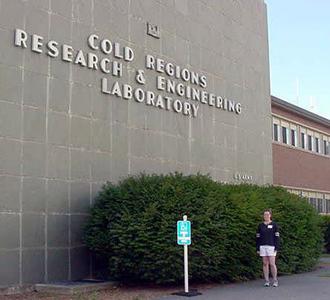
|
|
7 August, 2002
Learn to Teach, Teach to Learn
While my Hollywood hero Indiana Jones might take off to an exotic locale
with only his signature whip and hat, gearing up for Antarctic research
requires a little more preparation. Training for the Teachers
Experiencing Antarctica and the Arctic (TEA) program begins more than a
year in advance with "summer school" at the Cold Regions Research and
Engineering Laboratory (CRREL) in Hanover, NH.
The TEA program, funded by the National Science Foundation and
facilitated by CRREL, the American Museum of Natural History, and Rice
University, pairs K-12 teachers with polar researchers. As an active
member of a research team I will spend about two months in Antarctica
conducting fieldwork and acting as a liaison between scientists and
learners of all ages. To prepare for my trip, I am learning about the
goals of the TEA program, former TEA research projects, and the roles of
support agencies like Raytheon, the company that will help me arrange my
transportation, computer technology, and the most important gear -- my
extreme cold clothes!
Yesterday's CRREL tour of a -20°F "cold room" gave me a taste of my
upcoming polar experience and a new appreciation for proper polar
clothes! The "cold room" is a variable temperature storage space that
houses a variety of cold region materials. While CRREL supports
scientific research across a wide range of disciplines such as geology,
biology, medicine, astrophysics, and climatology, its prime directive is
two-fold. As one of four U.S. Army Corps of Engineering Labs, CRREL
supports military personnel working in cold areas as well as researchers
concerned with local and polar projects.
Further exploration of the CRREL facility reveals a bee-hive of
activity. Exciting new research includes the development of an
economic, anti-freeze concrete that can be used for construction in cold
climates like Alaska and Bosnia. In other corners of the facility,
engineers tinker busily with scale models of arctic ice sheets and
frozen rivers to test how ice exerts pressure on submarines, bridge
supports, retaining walls, and offshore oil rigs.
With my head spinning after three days of fantastic polar presentations,
I am looking forward to tomorrow's field safety course. Stay tuned for
exciting details from "Learn to Return."

Figure 1 - US Army Corps of Engineering Cold Regions Research and Engineering Lab in Hanover, NH.
Contact the TEA in the field at
.
If you cannot connect through your browser, copy the
TEA's e-mail address in the "To:" line of
your favorite e-mail package.
|
